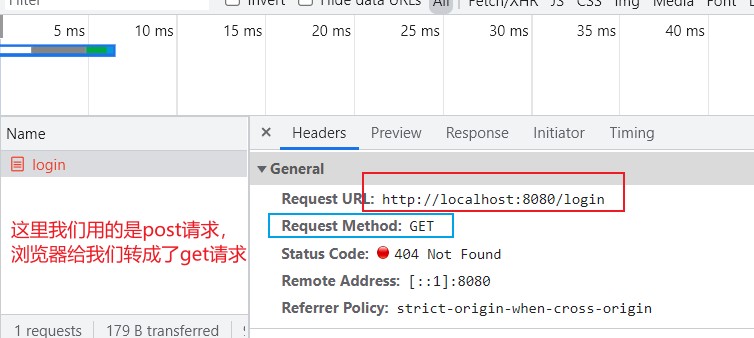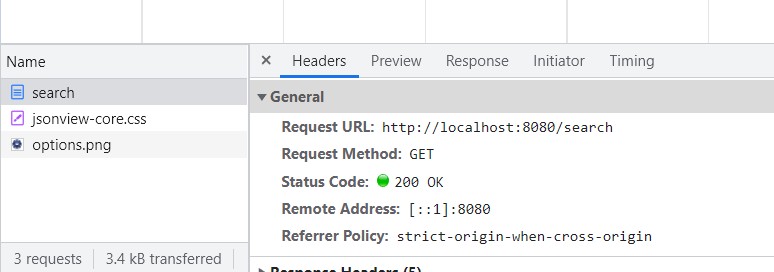1、get
1、请求的数据放在url中,对用户来说是可见的(可见性)2、get方式不是很安全(安全性)3、get对传参的大小有限制
<form action="http://localhost:8080/search" method="get"> <!-- name属性是为了方便前端传值,后端传值 --> 用户名<input type="text" name="username"><br> 密码<input type="text" name="userpassword"><br> <input type="submit"></form>

2、post
使用场景:登录注册的时候,我们使用post方式1、数据对用户是不可见的,请求的参数没有放在url地址栏中(可见性)2、相对较安全3、对传输的数据理论上没有限制 1Mb
<form action="http://localhost:8080/login" method="POST"> <!-- name属性是为了方便前端传值,后端传值 --> 用户名<input type="text" name="username"><br> 密码<input type="text" name="userpassword"><br> <input type="submit"></form>
3、url
1、url里只能发送get请求
const koa = require("koa")const router = require("koa-router")()const app = new koa()router.get("/search",async ctx=>{ ctx.body = { code:200, msg:"搜索" }})router.post("/login",async ctx=>{ ctx.body = { code:200, msg:"登录" }})app.use(router.routes())app.listen(8080,()=>{ console.log("服务器打开了");})


4、获取post提交的数据
yarn add koa-bodyconst Koa = require('koa');const koaBody = require('koa-body');const app = new Koa();app.use(koaBody());app.use(ctx => { console.log(ctx.request.body)});app.listen(3000);




